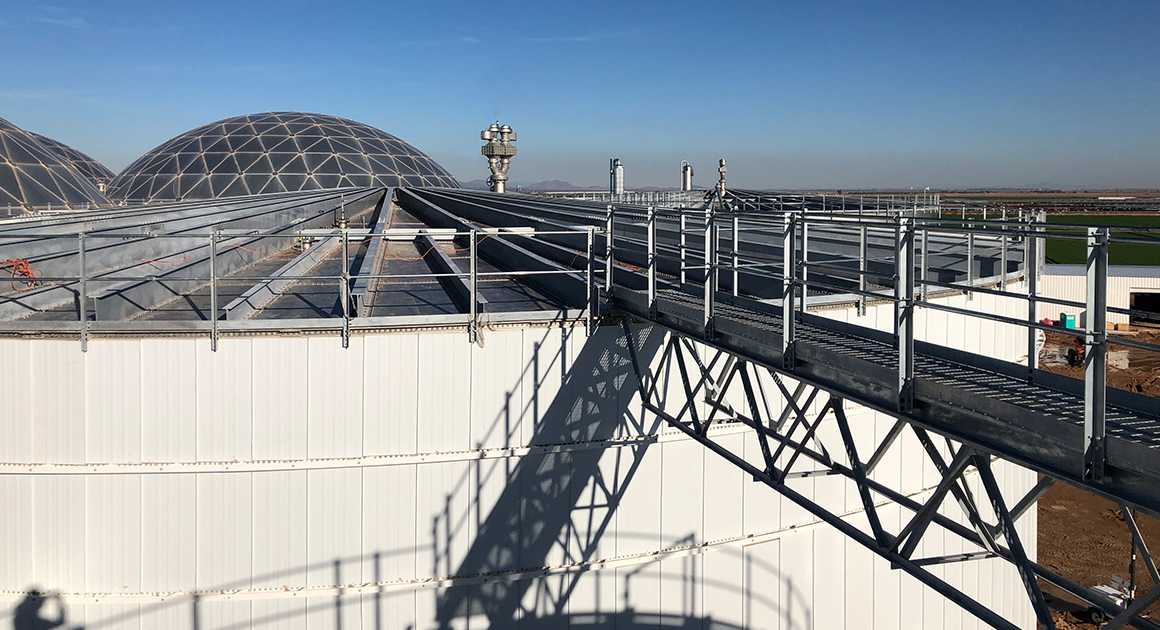From the increase in electronic cars to solar power, the benefits of renewable energy range from improved public health to reliability and resilience. Governments and private organizations have established climate goals to reduce their carbon emissions, and exploring renewable energy sources—such as solar, wind, and renewable natural gas—are key to meeting these goals.
With growing demand for renewable energy production, renewable natural gas (RNG) is becoming an increasingly appealing and economically feasible source. Various incentive programs at the utility, state, and federal levels have proven to be powerful driving forces behind funding renewable energy projects, including the Renewable Fuel Standard, the Renewable Portfolio Standard, and various net metering and feed-in tariff programs. This article focuses on five key components of a feasible agricultural RNG project.
According to the EPA AgSTAR Livestock Anaerobic Digester Database, in March 2021, there were 96 manure-based anaerobic digester systems producing RNG (includes pipeline injection and compressed natural gas projects) in the United States with 34 RNG projects under construction. We anticipate these numbers to increase as farmers seek supplemental revenue sources and as greenhouse gas reduction policies drive the demand for additional renewable energy supplies. As more RNG facilities become integrated into the grid, it will be critical to properly assess the feasibility of each project to achieve the designed return on investment (ROI).
Leveraging our experience in analyzing, planning, permitting, engineering, and constructing anaerobic digesters for water facilities and organizations, Brown and Caldwell has supported numerous agricultural RNG projects. Based on this knowledge, we have identified five project fundamentals critical to resulting in a bankable RNG project—likely to attract investment opportunities to offset construction costs from private equity investors, gas utilities, or banks.
1. Feedstock Agreement: Feedstocks are required to produce the biogas that will eventually be upgraded to RNG. Securing long-term agreements with feedstock providers facilitates project success due to the consistent feed of organic materials to the facility.
2. Pathway to Permitting: There are several critical permits (e.g., air, land use) that are required for any RNG project. Securing the permits or delays in the permitting process can halt projects or negatively impact schedules resulting in lost revenue.
3. Available Utilities: Utilities such as natural gas and electricity are required to operate an RNG facility. Due to the remote locations of many agricultural RNG projects, understanding the capacity of local utilities or the ability to get utilities to the site can have significant capital costs or result in project delays if the local utility has to provide power or natural gas to the site.
4. Site Lease: Land must be purchased or leased to construct an RNG facility. The location and size of a property directly impact the layout and design of a facility. Securing the land at the beginning of a project enables the design team to identify the optimal layout and determine whether any liens, utility locations, or other issues are associated with the site.
5. Attractive and Favorable ROI for Gas Production: All RNG projects are designed to achieve a target ROI. The degree of the ROI will depend on the funding agency or entity. Appropriately identifying capital expenses, considering true operating costs, and maintaining design and operating considerations throughout the progress of the project is critical to maintaining the target ROI.
While we continue to seek a more resilient and reliable energy future, we expect the RNG market will grow in scale and investors. From collaborative public-private partnerships to streamlined policy and approval frameworks, the path to planning, permitting, constructing, and operating agricultural RNG projects will continue to become more efficient as more projects come online and this renewable energy supply becomes integrated into the grid.
